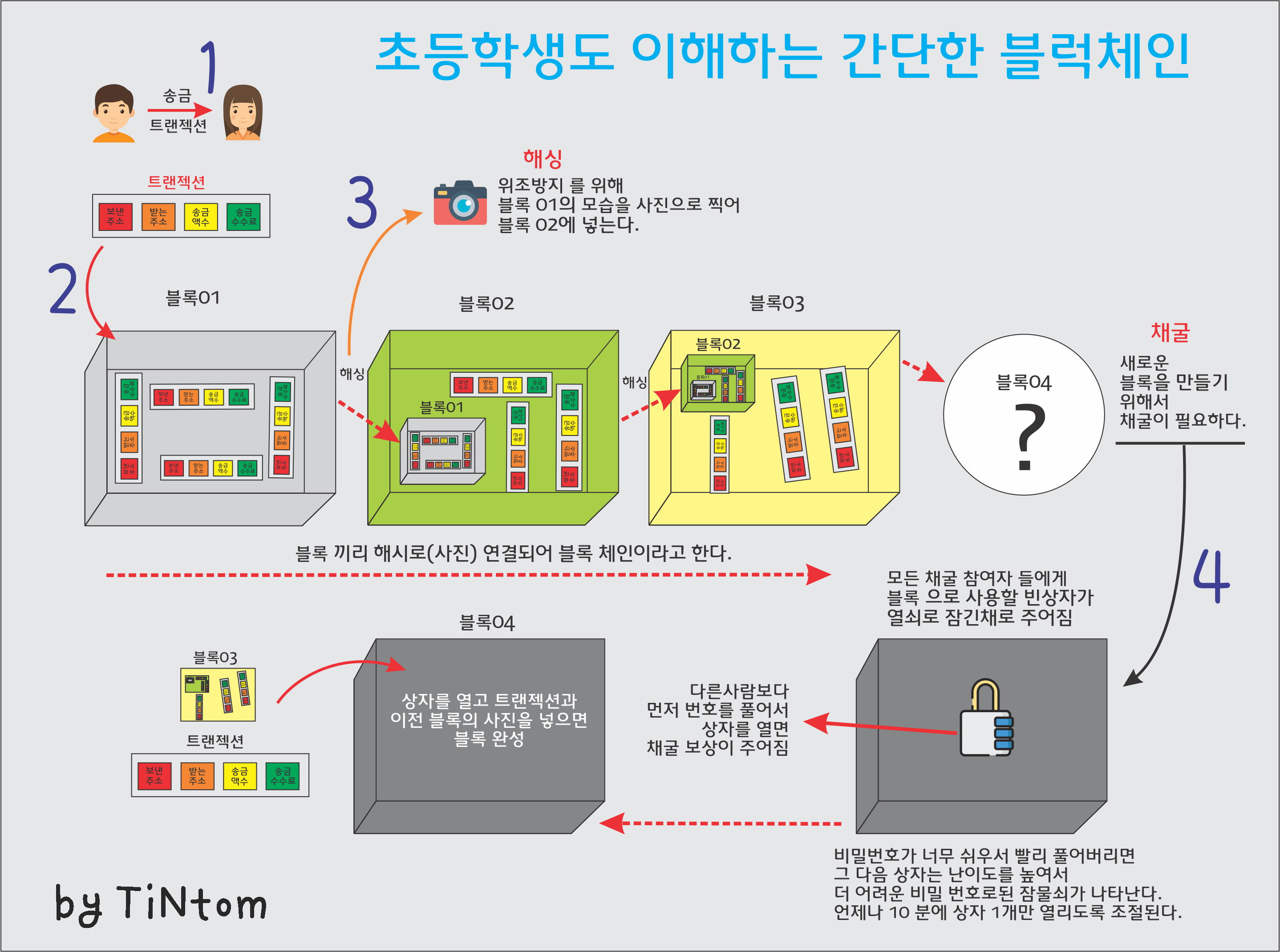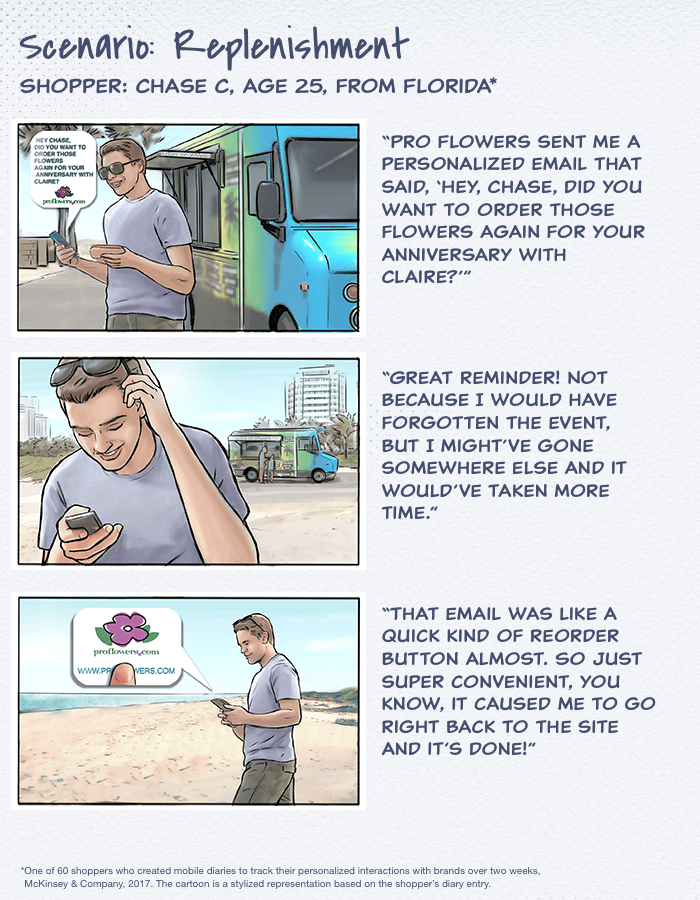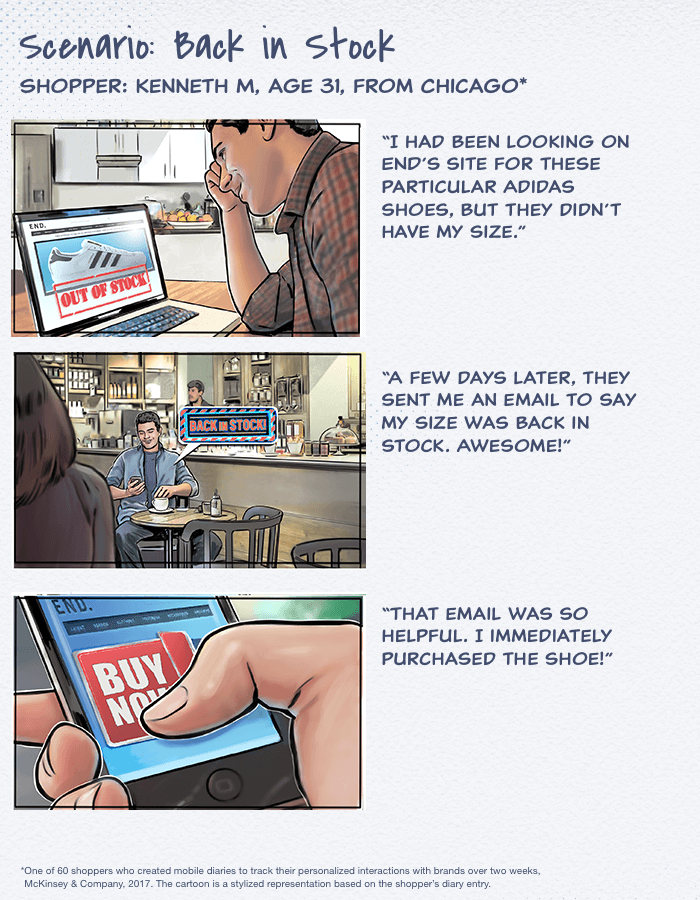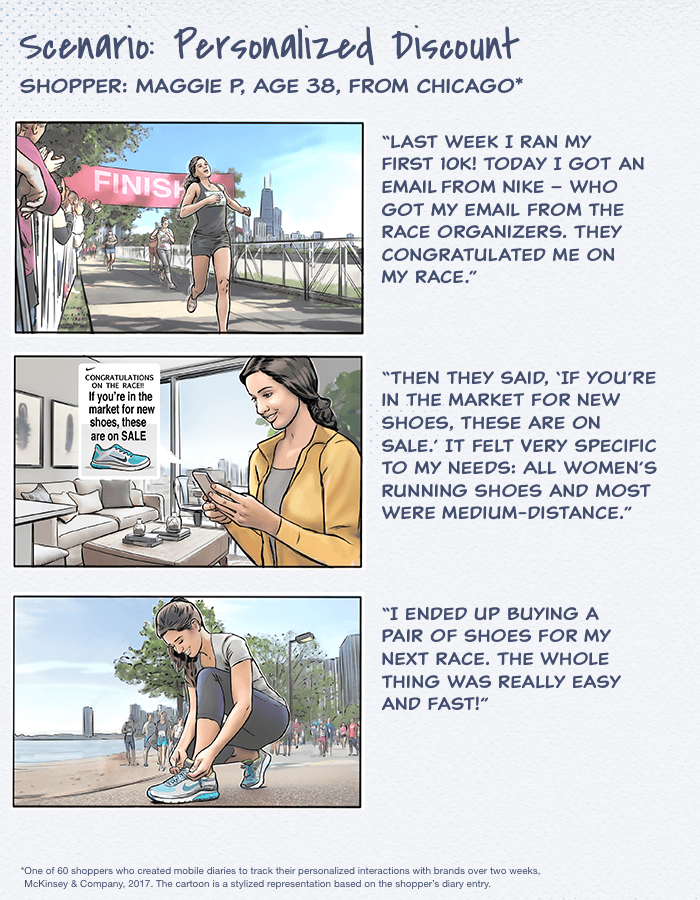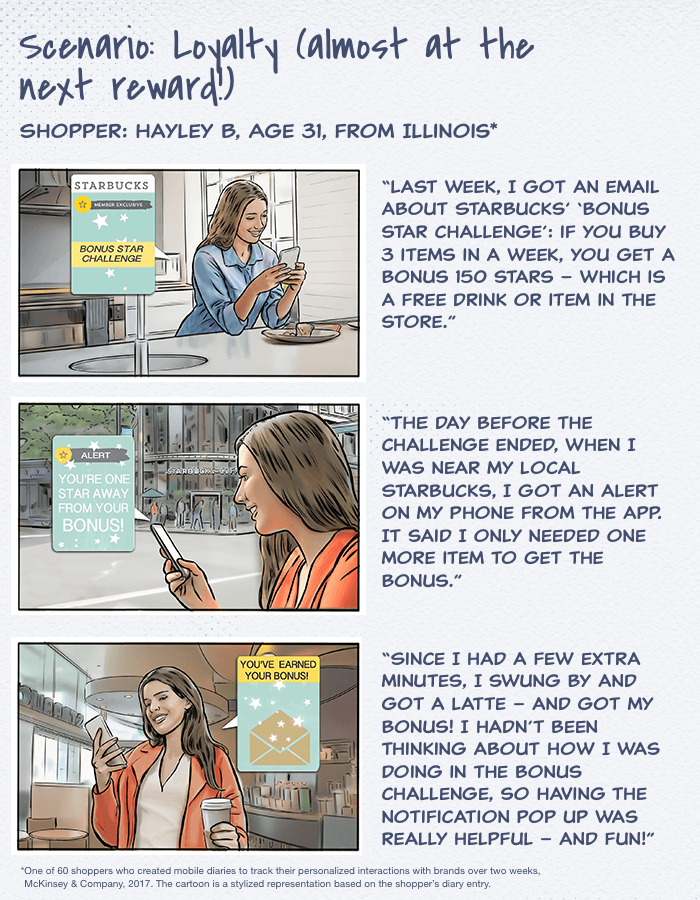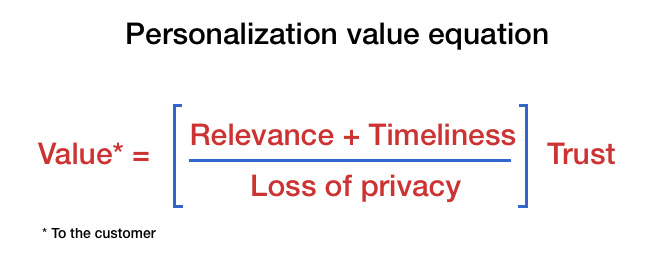 13일 서울의 한 대형서점에서 구직자로 보이는 청년이 국가직무능력표준(NCS)과 자격증 관련 서적 코너에서 책을 둘러보고 있다. NCS는 현장에서 직무를 수행하기 위해 요구되는 지식, 기술, 태도 등의 내용을 국가가 체계화한 것이다. 민간분야에서 발급하는 자격증은 2018년 12월 기준 약 3만3000개이다. NCS와 자격증을 준비하는 것은 구직활동의 첫 단계로 여겨진다. 김창길 기자 cut@kyunahyng.com
13일 서울의 한 대형서점에서 구직자로 보이는 청년이 국가직무능력표준(NCS)과 자격증 관련 서적 코너에서 책을 둘러보고 있다. NCS는 현장에서 직무를 수행하기 위해 요구되는 지식, 기술, 태도 등의 내용을 국가가 체계화한 것이다. 민간분야에서 발급하는 자격증은 2018년 12월 기준 약 3만3000개이다. NCS와 자격증을 준비하는 것은 구직활동의 첫 단계로 여겨진다. 김창길 기자 cut@kyunahyng.com고령화 인한 위기론 쏟아지지만
우선 현재 인구로 생산성 높이기
일·교육·일터 총체적 변화가 답
통계청이 지난달 발표한 ‘2017년 생명표’는 그해 태어난 아이들이 평균 2099년(82.7세)까지 살 것으로 전망한다. 2007년생에 비해 2017년생은 3.5년 더 오래 살 정도로 평균수명이 늘고 있다. ‘100세시대’가 조만간 도래한다고 해도 놀랍지 않지만 한 사람의 인생으로 100년의 시간이 주어진다는 것은 두렵다. 평균 49세에 퇴직하는 일반적인 시스템에서 ‘100년의 시간’은 공포다. 퇴직하고 저임금 단순 일자리를 전전해야 한다면 생명의 연장을 축복으로 느낄 수 없다.
고령화로 인해 사회가 무기력해질 것이라는 불안도 크다. 2017년 7월 한국은행 경제연구원은 급속한 고령화 추세가 그대로 이어진다면 연간 경제성장률은 2000~2015년 연평균 3.9%에서 2036년에 0% 안팎으로 떨어질 수 있다는 분석을 내놨다. 언론들은 ‘10년 후 0% 성장’ 등 위기론만 쏟아냈다. 당시 보고서는 은퇴 시기 연장, 여성의 경제활동 확대, 생산성 향상 등 고령화의 부정적 효과를 완화해줄 대책을 제시했고 “적절하게 대응하면 생산성 향상 등으로 개개인의 후생은 오히려 향상될 수도 있다”고 밝혔지만 이 문장은 주목받지 못했다.
한국의 생산성은 매우 낮다. 피고용인 1인당 노동생산성은 2015년 기준 6만6800달러로 경제협력개발기구(OECD) 회원국 평균(8만5000달러)보다 낮고, 비교국 29개국 중 17위다. 다들 힘들게 오래 일하고 생산가능인구(15~64세)가 줄어든다고 아우성이지만 정작 먼저 해야 할 일은 현재 인구로 생산성을 높이는 방법을 찾는 것이다.
해답은 사회의 총체적인 변화다. 일의 의미도, 교육도, 일터도 달라져야 한다. 그런데 현실은 세계적인 추세와 거꾸로다. 좋은 직업을 얻기 위해 학창 시절 내내 스펙을 쌓고 각종 자격증을 취득하지만 막상 직장에 들어가면 뭘 위해 일해야 하는지 의미를 찾지 못한다. 교육은 안정적인 직업을 얻는 순간 멈추고, 일터는 이제까지의 방식만 고수할 뿐 새로운 문화와 흐름을 거부한다. 인생 3모작, 4모작 시대에 배워야 할 것은 ‘일(직업)’이 아니라 ‘나’ 그리고 ‘관계’다. 평생 자신의 관심사에 귀 기울이고 흥미 있는 주제를 탐구하며 그것을 직업과 연결할 수 있는 사회를 만들어야 한다. 우리는 모두 일할 수 있도록 사람을 키우고 있는가.

사람 수는 줄어들고 사람들은 오래 산다. 적은 이들이 더 똘똘하게 일해야 하며, 평생 교육과 노동을 오가며 살아갈 시대가 온다. 한국의 교육은 개인들이 이런 미래를 대비하도록 하는 ‘디딤돌’의 역할을 잘하고 있을까.
정부는 세계화와 정보화 추세에 맞춰 1990년대 중반부터 직업교육에 관심을 기울이기 시작했다. 교육부 산하 교육개혁위원회는 1995년 ‘정보화·세계화 시대 대응’이라는 취지를 내걸고 직업교육개편안을 발표했다. 청소년기에 일찍 직업을 선택할 수 있도록 하고, 전문 직업인의 능력을 향상시킨다는 것이 핵심이다.
외환위기 후 청년실업 대두
2001년부터 ‘유망직업’ 소개
학교선 빨리 진로 선택 압박
초등생 진로컨설팅 전문가
“상상력 가로막힌 아이들
집단적인 무력감에 빠져”
한국의 진로교육은 자신만의 꿈과 끼를 가능한 한 일찍 발견하라고 강조한다. ‘청년실업 50만 시대’를 듣고 자란 청소년들도 ‘일찍’ 진로를 결정해야 한다는 압박을 느낀다. 미래를 자유롭게 상상하는 대신, 현재의 직업목록 중에서 근사해 혹은 가능해 보이는 것을 골라 서둘러 ‘꿈’이라 적어내고 미래를 준비한다. 교육은 미래를 위한 디딤돌 대신 직업에 대한 편견과 불안을 전달하는 통로가 됐다. 무엇보다 청년인구가 급증하던 시대 만들어진 대책은 현재 인구구조의 변화와 맞지 않는다는 지적도 나온다.
역설적이지만 그래도 답은 배움이다. 배움의 본질이 문제의 원인을 찾고 해결책을 상상해 나가는 것이기 때문이다. 개인이 두려움에 압도당하지 않고 미래를 꿈꿀 수 있으려면 ‘지금까지의 교육’이 바뀌어야 한다.
■ 빠른 진로 결정…‘일찍’의 배신
장래희망 없이 자란 학생들도
떠밀리듯 취업전선 뛰어들어
“혹시 몰라서 자격증 공부”
청년들은 진로를 빨리 선택해야 한다는 압박을 어느 정도 느끼며 살까. 올해 항공사 취업이 확정된 이다연씨(26·가명)는 진로를 비교적 일찍 선택한 사례다. 반면 취업준비는 오래 걸렸다.
이씨는 고1 때 영문과에 지망하기로 결정했다. 입학사정관제 입시에서는 지망 학과를 일찍 정해 관련 있는 활동을 꾸준히 하는 것이 중요하다고 들었다. 영어과목을 잘해서 영문학과를 선택했다. 현직 국제회의 전문 통역사에게 “멘토가 되어 달라”고 편지를 쓰고 답장도 받았다. 영문학과 상관있는 대표적 직업이라고 생각했다. 국제회의 전문가는 2000년대 내내 한국고용정보원이 추천한 유망직업이기도 했다.
대학에서 동아리 활동을 하며 ‘예술이나 공연 쪽이 더 관심사가 아닐까’ 하는 생각을 했다. 해외에서 일하는 것도 좋아 보였다. 대학교 2학년 마치고 통역사, 해외근무와 조금씩 관련이 있는 승무원이 되기로 결심했다. 한 살이라도 어릴 때 취업준비에 들어가는 것이 유리해 보였다.
취업준비에는 5년이 걸렸다. 아르바이트를 할 때도, 책을 읽을 때도, 취미로 운동을 배울 때도 대학입시 때와 마찬가지로 일상의 모든 것을 취업을 염두에 두며 선택했다. 하지만 번번이 떨어졌다. 낙방을 거듭하면서 치아교정을 하는 등 ‘세상이 원하는 승무원상’에 나를 맞추려 노력했다. 자기소개서를 검토해 준 지인들은 “자기 자신에 대한 이해가 부족하다”고 평가했다.
항공사에 기어이 합격했지만 이씨는 “진로 선택을 조금 늦게 했더라면 좋았을 것 같다”고 했다. 자신과 일에 대해 잘 모른 채 무작정 일찍 시작하는 것이 도움이 되지는 않았다. “외국 친구들은 직업보다 ‘나’에 대해 고민하더라고요. 25세에 하고 싶은 일을 못 결정해도 ‘나는 너무 늦었어’라고 자신을 자책하지 않아요. 그게 부러웠어요. 그런데 잘 안돼요. 집에 부담 주기도 싫고. 전 10대 중반부터 불안하지 않았던 적이 없었어요.”
올해 취업 확정된 이다연씨
“10대 중반부터 항상 불안
알바·취미 등 모두 취업 중심
‘내가 좋아하는 것’ 고민 부족
일이 적성에 맞을까 걱정돼”
요즘 가장 두려운 것은 승무원 블라인드앱에 올라오는 괴롭힘 사례다. 막상 승무원 일이 적성에 맞지 않을지 모른다는 걱정도 들고, 승무원에 대한 폭력 사건을 뉴스에서 접하니 두렵다. ‘나에게 이런 일이 닥치면 어떡하지?’ 청소년기에 배워야 할 것들을 제대로 배우지 않았다는 느낌이 새삼 든다.
■ 책임 떠넘기는 ‘자격증 공화국’
일찌감치 할 일을 정해두지 못한 학생들도 특정 나이가 되면 떠밀리듯이 취업준비에 나선다. 경영학을 전공하는 대학생 박진수씨(26)는 이번 겨울방학 때 한국사능력검정시험을 대비해 공부하고 있다. “혹시 모르니 공기업 입사에 필요한 자격증들은 미리 따두려고 합니다.” 한국사 지식이 일과 관련 있을 것이라고 생각하느냐고 물으니 고개를 저었다. 불안해서, 그리고 익숙한 공부방식이라, 그리고 다른 공부나 훈련이 제공되지 않아서 자격증부터 시작한다.
정부는 1997년 자격기본법을 만들고 민간자격증 제도를 도입했다. 2013년부터는 민간자격 사전등록제를 시행해 생명·건강·안전·국방 등의 분야가 아니라면 어떤 법인·단체·개인이라도 쉽게 자격증을 만들 수 있게 했다. ‘내실 있는 직업교육’을 통해 청년실업을 해소하고 우수인력을 양성하겠다는 취지였다. 한국직업능력개발원에 따르면 협회나 민간 업체에서 발급하는 민간자격의 등록 건수가 2012년 3378개에서 2018년 12월 기준 약 3만3000개로 늘었다.
드론지도사, 코딩지도사, 요가·스트레칭지도사, 앙금플라워 떡케이크 전문가, 경영데이터 분석사 등 내용은 다양하다. 민간시장에서의 자격증 발급은 정부 정책과 밀접하게 관련돼 있다. 참여정부 시절 사회복지서비스, 이명박 정부 시절 녹색성장 및 한식, 박근혜 정부 시절엔 콘텐츠 관련 자격증이 급증했다. 최근에는 지난해 정부가 8대 신성장산업으로 선정한 빅데이터, 인공지능, 드론 관련 자격증이 부쩍 늘었다. 빅데이터 자격증만 해도 한국인터넷진흥원 발급 2종과 통계청 발급 1종을 비롯해 민간자격증 등 다양하다. 그러나 정부가 유망산업과 직종을 선정해 소개하는 데 그친다는 문제가 있다. 임운택 계명대 사회학과 교수는 “정부와 교육기관이 내실 있는 직업훈련을 만드는 데 투자하지 않고, 자격증 시장으로 대체하며 면피하고 있다”고 말했다.
정부는 민간 교육기관을 통해 다양한 자격증 과정을 이수시킨 것으로 할 일을 다했다고 실적을 보고하고, 자격증 과정 학원이나 자격증을 발급하는 협회는 정부의 지원과 수험생들의 응시료로 돈을 번다. 그러다 보니 내실 있는 기술을 가르치는 곳보다 쉽고 빨리 딸 수 있는 허울 좋은 자격증 시장이 범람하고 있다. 무자격 강사가 가르치거나 취업에 도움되지 않는 자격증이 많아 소비자 피해 호소도 많아지고 있다.
정부가 직업정보 전달에 관심을 기울이기 시작한 것은 외환위기로 청년실업이 사회문제가 될 무렵이었다. 1997년 미국 노동부의 ‘직업전망서’를 번역해 냈고, 2001년부터는 ‘한국형’ 직업안내서를 개발했다. 민간자격증 제도를 정비한 것도 그 연장선이었다.
고용노동부 산하 한국고용정보원은 2001년부터 매년 직업정보 책자를 발간한다. 8000여종의 직업을 분석하고 전문가들을 인터뷰해 향후 3~5년간 고용이 크게 늘어날 분야를 소개한다. 언론에는 ‘미래 유망직업’으로 주로 소개된다.
유망직업 선정과 자격증 위주의 직업정책이 사회 및 인구구조의 변화와 맞지 않다는 지적도 있다. <어떻게 경영을 공부할 것인가>의 저자 신승훈씨는 브런치 매거진에 쓴 칼럼 ‘자격증 공화국’에서 “자격증이 필요한 경우는 인재 시장에서 수요보다 공급이 너무 많아 면접관들이 일일이 지원자들의 역량을 평가할 시간이 없고, 최소한의 노력으로 직무능력을 판단할 때”라고 설명했다. 노동인구가 쏟아져나오고 표준화된 기술을 가진 인력을 대량으로 채용할 때 적합한 방식이다. 오호영 직업능력개발원 선임연구위원은 “정부가 유망직업이라고 발표하고 자격증 과정이 쏟아져나온 직업 중 실현되지 않은 것이 많다”며 “정부가 유망산업을 선정하는 것 역시 정보를 움켜쥐고 미래를 가장 잘 내다보는 주체가 정부라는 발상에서 나오는 건데 현대사회와 맞지 않다”고 말했다.
인구가 줄어드는 만큼 한 사람 한 사람 세심하게 교육하는 정책으로 전환해야 한다. 구직자들이 교육에 느끼는 갈증이기도 하다. 충청권의 한 사립대를 졸업한 홍승원씨(31)는 지난해 군 복무를 마치고 미국 유학길에 올랐다. 컴퓨터공학 전문학교에 다니기 위해서다. 홍씨는 “미국에선 컴퓨터공학과 관련한 이공계를 전공하지 않은 사람들도 다닐 수 있는 학교가 많고 교육과정을 이수하면 전문 능력이 있는 것으로 본다”며 “언제든 새로 배울 수 있고 형식적인 자격증 과정에 얽매이지 않아도 된다”고 말했다. 내실 있는 교육이 제공되지 않는 현실이 인재 유출의 원인이 될 수도 있는 것이다.
■ 초등학생에게까지 내려온 불안
학창시절 자신이 누군지 고민할 틈도 없이 내쫓기며 진학한다. 막상 일을 구해야 할 때는 무엇을 해야 할지 몰라 비용을 써가며 각종 시험과 자격증의 바다를 헤맨다. 구직자들의 불안감은 중·고등학생을 넘어 초등학생으로, 점점 더 어린 연령대로 전파되고 있다. 전파되는 불안은 미래세대를 도전적이기보다는 움츠러들게 만든다.
신동하 경기교육연구소 연구실장은 “진로교육이 개인에게 책임을 떠넘기는 논리로 설계돼 있다”고 말했다. 청년실업은 저성장 등 구조적 문제의 결과다. 그러나 1995년 진로교육의 틀이 잡힐 때부터 정부는 청소년 개개인이 빨리 진로선택을 하는 것으로 청년실업 문제의 돌파구를 찾고, 일자리를 찾지 못하는 것을 개개인의 책임으로 돌렸다는 것이다.
청년과 대학생이 중장년층의 불안한 진로경로를 보며 쫓기듯, 초등학생은 청년들을 보며 불안과 무력함을 학습한다는 것이 교사들의 전언이다. 경기의 한 초등교사 박선영씨(34)는 “국가가 유망직업이란 걸 발표하고, 교사와 부모가 ‘네 꿈이 뭐니?’ ‘장래희망이 뭐니?’라고 반복적으로 물어보면 아이들은 어른들이 원하는 질문에 답하는 것을 더 고민한다. 그리고 그런 직업을 가질 수 없는 아이들은 일찍 자신을 포기한다”고 전했다.
익명을 부탁한 한 중학교 교사는 “교육부에서도 중학생 단계에서는 자신의 소질을 탐색하라고 하고, 고등학교에 가서 구체적 진로교육을 하라고 한다. 동시에 실적을 강요한다. 진로교육시간 대부분은 변호사, 의사 등 유명 직업인을 불러 이야기를 듣거나 잡월드 등을 견학하면서 보내는데, 대부분 학생들이 갖지 못할 직업들이고, 정말 중요한 직업의 의미, 가치 이런 수업은 뒷전이 된다는 생각을 한다”고 말했다.
초등생 진로 및 학습 컨설팅을 하는 이혜민 마리아코칭연구소 소장은 “아이들이 집단적 멘붕 상태라고 할 정도로 무력감에 빠져 있다. 진로에 대한 강박이 자신과 세상에 대한 상상력을 제약해 창의와 도전정신을 가로막고 있다”고 말했다. 김용성 한국개발연구원(KDI) 선임연구위원은 “어린 시절 배움 자체를 즐겁게 여길 수 있어야 성인이 되어서도 평생교육을 할 수 있다”며 “어릴 적 ‘배우는 법’ 자체를 배울 수 있도록 해야 한다”고 말했다.
별을 좋아하지만 천문학자 대신 밤하늘을 찍는 사진가가 될 수도 있고, 엔지니어나 SF소설가가 될 수도 있다. 별 관측은 취미로만 할 수도 있다. 어떤 삶을 택하든 긍정할 수 있는 마음가짐을 배우는 게 필요하다. 포기하거나 탈락했다는 좌절감이 우리를 배움으로부터 멀어지게 만들기 때문이다.
청년실업은 구조적인 문제
직업 교육의 굴레 벗어나
배움의 본질서 해결책 찾아야
전문가들은 ‘유망직종’의 틀에 갇히지 않고, 자신을 사랑하고, 남과 대화하는 방법 자체를 배워야 한다고 하는데, 아직도 우리 교육은 빨리 진로를 발견해 준비하라는 틀에 갇혀 있다. 빠르게, 많은 일자리가 창출되는 데 집중해 징검다리를 놓았던 국가의 전략도 달라져야 한다. 빨리 다음 단계로 건너가라는 징검다리 대신 언제든지 돌아와 배움 자체를 배우는 디딤돌이 돼야 한다는 것이다.
1. 인구 감소, 위기인가 기회인가
2. 다 인구 때문일까
3. 세대 게임을 넘어
4. 우리 모두는 일할 수 있을까
5. 아이 키우기에 정말 필요한 것은
6. 지방은 지속 가능한가
7. 우리는 이방인을 품을 수 있을까
8. 돌봄은 어떻게 재구성될까
박은하·임아영 기자 eunha999@kyunghyang.com
출처: http://news.khan.co.kr/kh_news/khan_art_view.html?artid=201901140600005&code=940100
'Psychology > SEB' 카테고리의 다른 글
| [스크랩/직장] 직장에서 롱런하는 인재들의 5가지 특징 (0) | 2017.03.26 |
|---|---|
| [스크랩/ SEB/사회] 학연, 지연, 인맥이라는 그들만의 리그 (0) | 2017.02.08 |
| [스크랩/Personal Brand] 10 Amazing Personal Branding Examples (0) | 2017.01.29 |
| [스크랩/취업/SEB] 더 좁아진 '취업문'…수시로 뽑고, 직무역량이 최고의 스펙 (0) | 2016.12.20 |
| [스크랩/교육] 엘리트의 타락한 인성은 투자로 전락한 상류층 교육 때문 (0) | 2016.11.18 |
